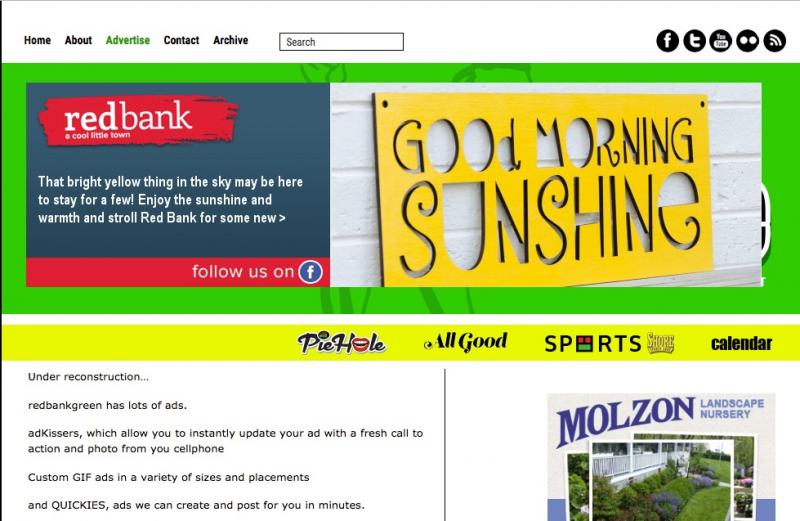Indie publishers gain mobile advantage with new ads

Indie online news publishers — with more than half their audiences coming from smart phones — can beat newspapers in the mobile advertising game if they take advantage of the specifics of the medium.
“The local daily newspapers that the indie publishers would typically be competing with haven't innovated in mobile at all,” says Kenny Katzgrau, co-founder of Broadstreet Ads. That means that the old type of ads “get pushed to bottom and they're out of the advertisers view so indie publishers really have to think “how do we make advertising on mobile valuable?”
In addition, 300 x 250 display ads are ubiquitous on the Web. An indie publisher can set itself apart by offering ads customized for mobile and contextualized to the locality, Katzgrau says.
Katzgrau has established Broadstreet as part of the community of indie online sites, providing extensive customer service via phone, email, newsletter, and a Facebook group of 300 active publishers called Broadstreet Community. Between 1,500 and 2,000 site owners visit the Broadstreet site each day taking advantage of its free and paid ad formats. Of those, Katzgrau estimates that between 500 and 1000 will reach into their coffers to buy a premium ad format.
The special “selfie” ad formats developed by Broadstreet are highly customizable, offer real time updates and deliver information as well as photos and video. Katzgrau says they look great on mobile as well as on the desktop. The formatting also eliminates the need for a designer, simplifying the sales process and bringing down costs.
The special ad formats aren’t available anywhere else. One format was inspired by a publisher who wanted to set up an ad that behaved like a game where after some random number of hovers by readers, the ad would flip over, revealing a $25 prize.
One new format is Broadstreet’s Laser Beam app, which delivers self-service “living” ads that allow the advertiser to update them real time through a smart phone app.
In the past, an advertiser would buy a coupon ad and it would sit in the sidebar on the publisher’s home page, staying the same for the three- to six-month term of sale. Because it never changed, people would eventually stop looking at it.
Using Laser Beam, a restaurant owner might decide to upload a new photo, describe the specials as many times a day as they like or focus on a sale. The changes will record wherever the ad is running.
“We're bringing this real time aspect into advertising which I think is incredibly important to making it valuable to the advertiser. Our goal is to make it not be an ad anymore ….we want to make it informational,” Katzgrau says.
The goal is to deliver an ad that is so immediate that it feels like a post in a Facebook feed. When delivered in real time on the smart phone, the context can be immediately relevant to the audience for the ad, who could be a couple strolling up the street looking for somewhere to eat.
Another Broadstreet design innovation uses animations to attract readers.
If you go to the homepage of broadstreetads.com you’ll see an image of a cheeseburger moving round. It’s one of 20 rich media ad formats that Broadstreet has built that allows publishers to upload photos, punch in information and publish.
It's small. It’s gimmicky. And it impresses advertisers. And that’s the point, Katzgrau says.
The special “selfie” ad formats are highly customizable and Katzgrau says a publisher can create the ad in 30 seconds. It makes the sales process go much more smoothly. Although many formats work in a sidebar, they can also work full page or even in the background.
Among the new formats are a coupon and an embedded YouTube ad.
Costs are modest.
“If you want to create a coupon with a picture in it, some text and some other details that comes to about $10 a month for the publisher per ad,” Katzgrau says. “In a lot of cases the publisher is making $300 to $400 per month.”
The updated ad formats are an important differentiator for indie publishers.
“Everyone's selling display ads, everyone's selling banner ads right now, so you want to sell something that's completely different than what everyone else is selling and that's what we're doing. We're making it basically different,” Katzgrau says
Although the formats are different they collect the same metrics.
“The value is just way higher and plus the click-through rate is insane,” he says. In advertising, the typical CTR is probably around 0.1%, but Katzgrau says some of the new formats are bringing a CTR of 1% to 5%. In some case, they are starting to see 1 out of every 100, or 1 out of every 50, or 1 out of every 20 people clicking on an ad.
“That's a pretty powerful thing” Katzgrau says.
Besides the value for the advertiser and the ease for the publishers, the ad formatting brings cost savings because there’s no need for a designer. It also helps with sales calls because the publisher can design the ad in advance of meeting with the advertiser.
“it's actually something tangible now and you can show them what their ad is going to look like. If it looks great, you can make the sale a lot easier,” Katzgrau says.
The ads are just a few of the new tools that are helping indie news publishers make it these days.
And Katzgrau says business is brisk.
“We’re probably getting five to seven sign ups a day now,” he says.
“Selling is pretty hard, but I think the ad format has really helped convert those publishers who haven't sold a lot in the past to publishers who are now selling,” Katzgrau says.



